We all like catching fish, but no fish has captured the Northwest’s fascination like the steelhead has. There is something special about catching a steelhead that is hard to define.
Hard core steelhead anglers are known for fishing in winter conditions when sane people are home in front of the fire. They will spend countless hours on the water hoping to feel that tug of a steelhead on the line.
Like most species of fish there are multiple ways to fish for them. This guide covers how to catch steelhead using plugs. A plug is a hard bodied fishing lure which wiggles and dives. Mainly this technique is used from a boat, but I’ll also cover how to use them from shore.
Regardless if you are one of those crazy experienced steelheaders, or a novice hoping for your first fish, I hope this article will help.
In part 1 covers the plugs themselves – what models, sizes and colors you need. As well as how to customize plugs to maximize fish catching.
In part 2 is about selecting the right water, picking the right plug for conditions and effectively working it with plugs.
About A Fish
Some people confuse steelhead with salmon, but they are quite different. Others call any large rainbow trout a steelhead.
A steelhead is really a rainbow trout which, like a salmon, has migrated out to sea and then back to freshwater to spawn. I’ll grudgingly include the Great Lakes in the definition of “sea” for our brothers in the east.
Unlike a salmon, steelhead are not genetically programed to die after spawning. However due to the stresses of migrating and spawning there is a large mortality rate.
Generally speaking, there are two main runs of steelhead – a winter and summer run. Summer run fish enter the river in the summer months and winter run fish return in the winter (duh!). Regardless of when they returned to the river, steelhead – like non-sea going rainbow trout – spawn in the spring months. Individual rivers may have both timings of runs, or only one. Some rivers even have what they call A and B runs – runs which share the same season but are separate runs returning at different times in those seasons.

The exact timing of the runs and spawning varies from river to river, so make sure to do your homework before hitting the water.
Rod, Reel and Line
Before you can hit the water you need to make sure you have the right gear. Technically you could use any rod and reel, but you’ll find more success using a rod made for the technique. That means more bites and landing more fish.
Specialty plug rods are often called hot shot rods or kwik rods – named after popular plug lure models.
An ideal steelhead plug rod will have a sensitive tip that will let you know the plug is working properly. It will also have a fast action, to get a solid hookset when the fish hits the lure. It should be between 7’6” and 8’6”. The ideal rod will also have a line rating around 6 to 15 pounds.
The most well known, and some think the best, steelhead plug rod is the G Loomis HSR9000. The Lamiglass XCC 801 GH is also a great choice.
Most plug rods are casting rods, and should be paired with casting level wind reel. If you want a rod which will last forever and work great, then consider the Shimano Calcutta B. If you prefer line counter versions, then a Shimano Tekota reel is a good choice. If you need to stay in a budget then consider an Abu Garcia baitcasting reel.
If you are using a spinning rod, then you can’t go wrong with a Pflueger President reel. In my opinion it is hard to beat the performance and quality of this reel unless you spend considerably more money.
Whatever reel you buy, it should be rated to hold 150 to 180 yards of 10 pound mono. Which brings us to what type of line to use.
If you like mono line, then use 10 or 12 pound line. High visibility line can be very helpful while fishing, especially if multiple people are fishing. If you prefer the traditional “clear” line then it is hard to beat the performance of Maxima Ultragreen.
If you like braided line, then 30 to 40 pound line works well. You can get high visibility, or moss green. However I recommend getting metered line. This line changes color every so often, like every 10 feet. This allows you to know how much line is out without a line counter or using error prone techniques like counting pulls. My favorite is Power Pro Depth Hunter line.
I’m a big fan of braid, but it does have downsides. For steelhead plug fishing the most important downsides to remember are: First, the line retains water, which in cold winter steelhead conditions can freeze on the reel. The second is that braided line can slip on the spool, so remember to first spool on about 10 feet of mono to prevent that.
Regardless of your mainline type, finish it off with a size 7 swivel and then 4 or 5 feet of 8 pound fluorocarbon leader. The Seagaur Blue Label has never let me down.
Build A Plug Collection
The first time I fished with a die hard plug fisherman I was blown away by the number of plugs he had on the boat. He probably had 8 or 10 plano boxes – each packed full of plugs. Different styles, sizes and colors.
Fortunately, you don’t have to collect plugs like some women collect shoes in order to be fully armed and catching fish. But you do need to have enough different plugs to cover the variety of scenarios you are likely to fish. Plan on starting with at least five or six different plugs. Then as you decide to fish plugs more, grow your collection.
In the second part we’ll cover plug selection for the various conditions. That will help inform what plugs you should start your collection of the best steelhead plugs.
Plug Styles
There are three styles of steelhead plugs – banana style, wiggler style and rocker style. The banana style are plugs like flatfish, kwikfish and maglips. Wiggler style are Brad’s Wigglers, FatFish, Hot Shots and Wiggle Warts. Rockers consist of Tad Pollys and River Rockers.

In most cases having specific styles aren’t as important as having a variety of plugs that dive to different depths and can handle different current speeds.
While you can learn a bit about the current speed and diving depth from the packaging, the reality is you might need to experiment a bit. As you use plugs make notes about how well they seem to work in different conditions.
I’m a big fan of the MagLip plugs – they have a great action, work in wide range of speeds, dive well and don’t need tuning. My second favorite are Hot Shots, which are have been a great lure for many years.
Plug Sizes
Just about every lure comes in a variety of sizes. For steelhead, you’ll want lures which range from about 1 1/2 inches to 4 1/2 inches.
The sweet spot though is usually 2 to 3 1/2 inches. With a collection of plugs in that range you’ll be able to handle all but the most extreme conditions.
| Size | Size Category |
| 1 1/2 – 2 inches | Small |
| 2 – 3 1/2 inches | Medium |
| 3 1/2 – 4 1/2 inches | Large |
You can further refine the sizes for your collection if you know that your fishing is going to mostly be on a few specific rivers. If you only fish small rivers, then you can most likely focus on the smaller sizes. If you fish primarily large rivers, then you probably need more of the larger lures than the smaller.
Each lure manufacturer has their own size naming conventions. For example, Hot Shots come in sizes like 50 and 30. Strangely the larger the number, the smaller the lure. Flatfish come in sizes like F-7 and U-20, which sounds more like military planes than lure sizes. Until you are familiar with the sizes I suggest taking a measuring tape with you to the tackle shop, so you can ensure you are getting the size you want.
Water Speeds
You can tell if a lure can handle a given current speed by putting it in the water with about 6 feet of line out, and seeing how it runs.
If it has trouble wiggling or staying under the surface then the water speed is too slow for it. If the wiggle seems extreme or the lure spins at all, then the water speed is too fast.
Water that is just right for the plug will produce a strong diving action and a nice steady wiggle.
You will want some plugs for each of the different speeds of water you may fish. Below is how I break down different water speeds, and the plug models which generally work well in the speeds
| Water Speed | Speed Category | Plug Models |
| 1-2 MPH | Slow | MagLip, FlatFish, Kwikfish |
| 2-3 MPH | Medium | MagLip, Hot Shot, Wiggle Wart, Tad Polly |
| 3-4 MPH | Fast | MagLip, Hot Shot, River Rocker |
| 4+ MPH | Too Fast | None |
Diving Depths
As for diving depth, you should take any specific depth from the packaging with a grain of salt, and treat it more as a category. Try to have some plugs in each of the following categories.
| Specified Diving Depth | Diving Category | Plug Model |
| 3-6 feet | Shallow Diving | Flatfish, Kwikfish |
| 7-12 feet | Medium Diving | MagLip, River Rocker, Tad Polly |
| 13-20 feet | Deep Diving | MagLip, Hot Shot, Wiggle Wart |
The exact depth the lure will dive depends on many things – the lure, relative water speed, amount of line out, water resistance on the line (which mostly means line diameter) and any bait wrap. It will take time on the water and experience to learn for your plugs and your equipment what the actual depth is you get out of the plugs.
If you are fishing small rivers, then you’ll likely need a pretty even mix of shallow and medium diving lures.
If you are fishing big rivers, then have a few shallow diving, but most medium diving with a few deep diving ones.
Plug Colors
Each model of plug and each size come in a variety of colors and patterns. You’ll want a decent variety of colors for the different conditions and fish preferences.
Mostly you’ll want to use metallic colors. These work in a variety of conditions and have both solid colors and pattern variations.
For those shallow clear water conditions, it is good to have colors like:
For very murky conditions or fishing deep holes some bright UV colors like fluorescent red or chartreuse work well.
Cop Car (white body with black bill) and mother-of-pearl patterns are also good all round colors to have in your tackle box.
Configure Your Plugs
In many places, you can use the plug straight out of the box. However, you mean need to modify the plug in order to comply with the regulations on a specific river system, or to improve its performance. I modify most of my plugs, and believe it helps me hook and land more fish.
Single Point Hooks
I’m a big fan of single point hooks. I think they result in a better hook to land ratio. They also are much easier to unhook from the fish (and net). That helps not only when needing to release fish, but also helps get my gear back into the water quicker.
Not to mention that single point hooks are required in some of the places that I fish.
If the manufacturer has provided instructions on how to replace the stock treble hooks with single hooks, then follow those instructions.

Assuming they didn’t provide instructions, these will work for most lures:
- Select a replacement hook. Typically, this is going to be an open eye siwash hook. The hook gap (distance between the shaft and hook point) should be as 1 to 1.5 times as big as the hook gap on the stock treble.
- Remove the stock treble. I usually just cut them off.
- Thread a small swivel, typically size 7, onto the split ring still attached to the screw eye.
- Attach the hook eye to the other end of the swivel. With pliers close the eye of the hook.
- If using closed eye hooks, then use a split ring to connect the hook to the swivel.
- Make sure the screw eyes are still aligned with the lure body. If not, then adjust them.
There is more information here and here about single hooks on a banana style lure.
Odds are the plug will require tuning before you can use it. We’ll cover that a bit later.
The weight of the hardware may also impact the speeds the lure works at. Heavier hardware will stabilize it in faster water, but reduce the wiggle in slow water. Lighter hardware will help the action in slower water, but cause a reduction of top speed.
Changing Hook Placement
Wiggler style plugs, like Hot Shots, often have the hook fairly close to the body. You can get a better hookup if the hook is a little bit farther from the body. Regardless if you are sticking with treble hooks or switching to siwash single hook, you want the point of the hook to be about 1/2 to 3/4 of an inch behind the lure.
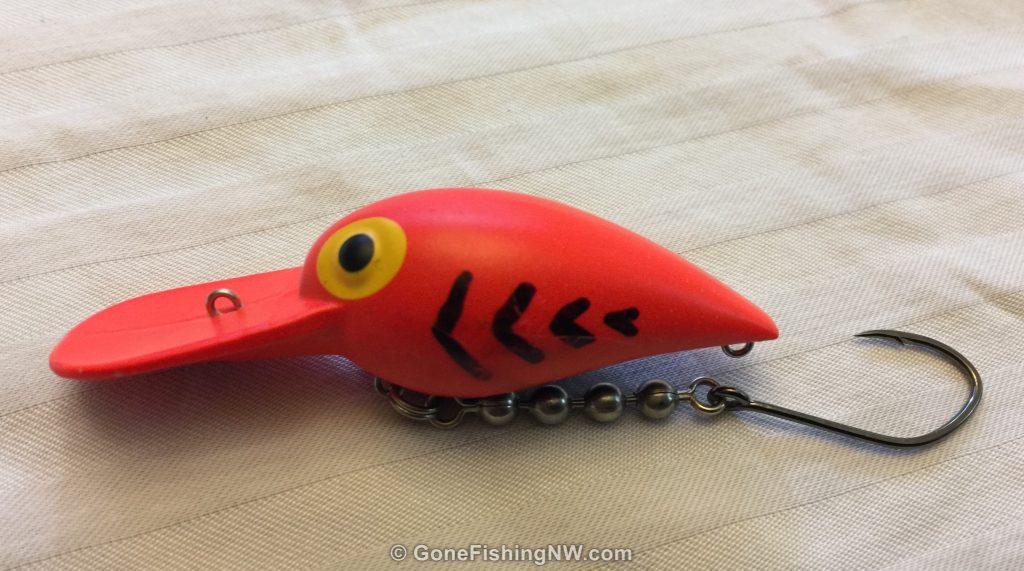
Simply follow these steps:
- Remove the hook from the split ring.
- Take a bead chain and thread it onto the split ring.
- Connect the hook to the other end of the bead chain.
- If you are using an open eye hook, then you can crimp the eye around the end of the chain.
- If you are using a closed eye hook, then use another split ring to connect it to the chain.
- Make sure the screw eye is still aligned with the body of the lure.
The additional weight of the bead chain (and possible different hook) may impact the action, so be sure to test it before fishing it. Most likely the lure might need a faster current than before.
Here is more information about putting a single hook on a Wiggler/Hot Shot style lure.
For banana style plugs an extra split ring, or perhaps a swivel, is all that is needed to achieve enough extra distance if using the treble hooks. However, I usually prefer just to make the switch to single point hooks. In any case here are instructions on how to put that treble hook back just a little farther.
Removing A Hook
Banana style plugs often have two hooks on them – one of the belly and one on the tail. By removing one of the hooks – the belly hook – the plug will wiggle more.
This will let the plug work in water that is a bit slower. This comes at a cost, as the lure may no longer work as well in the faster water. As well as, of course, there is one less hook – but I don’t find that to be a big deal as the majority of fish landed on 2 hook plugs are on the tail hook anyway.
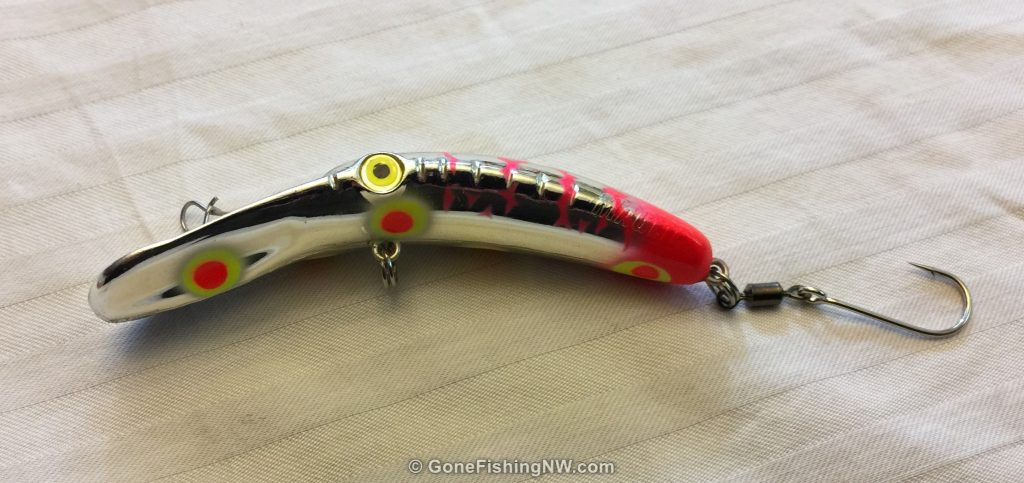
Make sure to leave the belly screw eye in the plug, and just remove the hook and split ring.
Duo-Lock Snap
The connection of the mainline to the plug can limit how freely the plug can wiggle. If you are familiar with Rapala lures, they recommend using a knot called the Rapala Knot (or non-slip mono knot if you are a fly fisherman). This is a loop knot which allows the lure to have a little more freedom of action.
Well we could tie our lures with that knot, or we can do what Hot Shot and MagLip lures do and have a dou-lock snap between the lure and the mainline.
For those lures which don’t come with a dou-lock snap I add one. If the lure has a little “stem” which is connected to the screw eye, then I’ll sometimes remove that stem in favor of the dou-lock.
Advanced Plug Customization
Some people get really into their plug color schemes, and will swear by some specific scheme known only to them and their close friends. Starting out plug fishing you don’t can ignore that “plug magic” and stick with the well known commercially available colors and patterns.
But as you get into it, you’ll find that you want to customize the plugs to achieve that slight edge – especially in those home waters that you fish a lot and have unlocked at least some of its secrets.
One easy way to customize plugs is with magic, or permanent, markers. The markers come in a variety of colors – not just black. Want a copper plug with red spots? Well just buy a solid copper plug, and add dots with a red marker. I do find that you need to occasionally go through your collection and touch up the plugs, as the ink does seem to fade and wash off a little.
Fortunately, my fishing skills are better than my art skills and my round dots and other shapes look like something done by a kindergarten class. So I find stencils quite handy in getting consistent and good looking results.
Another way to go is to use stickers and tape. There are several brands of lure stickers and tape out there. The adhesive is designed to last in those underwater uses. Some of the stickers come pre-cut in standard shapes like chevrons, circles and ovals.
You can also get uncut sheets, and cut out your own pattern. If you have access to something like a Circut or Silhouette then cutting your own professional looking patterns and shapes is easy.
Just remember smaller stickers are easier to apply, especially on the curved surfaces of the plug.
Lastly if your art skills are good, and you are really into customizing plugs, you can use an airbrush. That opens up a whole range of possible colors. I haven’t gone that far down the rabbit hole yet, but it beckons – especially as favorite patterns are discontinued by manufacturers.
However you choose to customize your plugs, I suggest taking pictures before fishing it. Then keep good notes as to what works. That was you can replicate that pattern when that said day happens when you plug is lost to a snag or bad knot.
Conclusion
You should now have a good idea of what kinds of plugs catch steelhead, and what you should have in your tackle box. You can also customize your lures by replacing or adjusting the hooks, and by adding a custom color scheme.
Part 2 will teach us how to select the right water to fish, what plug to select for the conditions, how to ensure our plugs are working properly and how to work a hole.
Please comment if you have questions, comments or experiences you’d like to share.
Tight Lines!

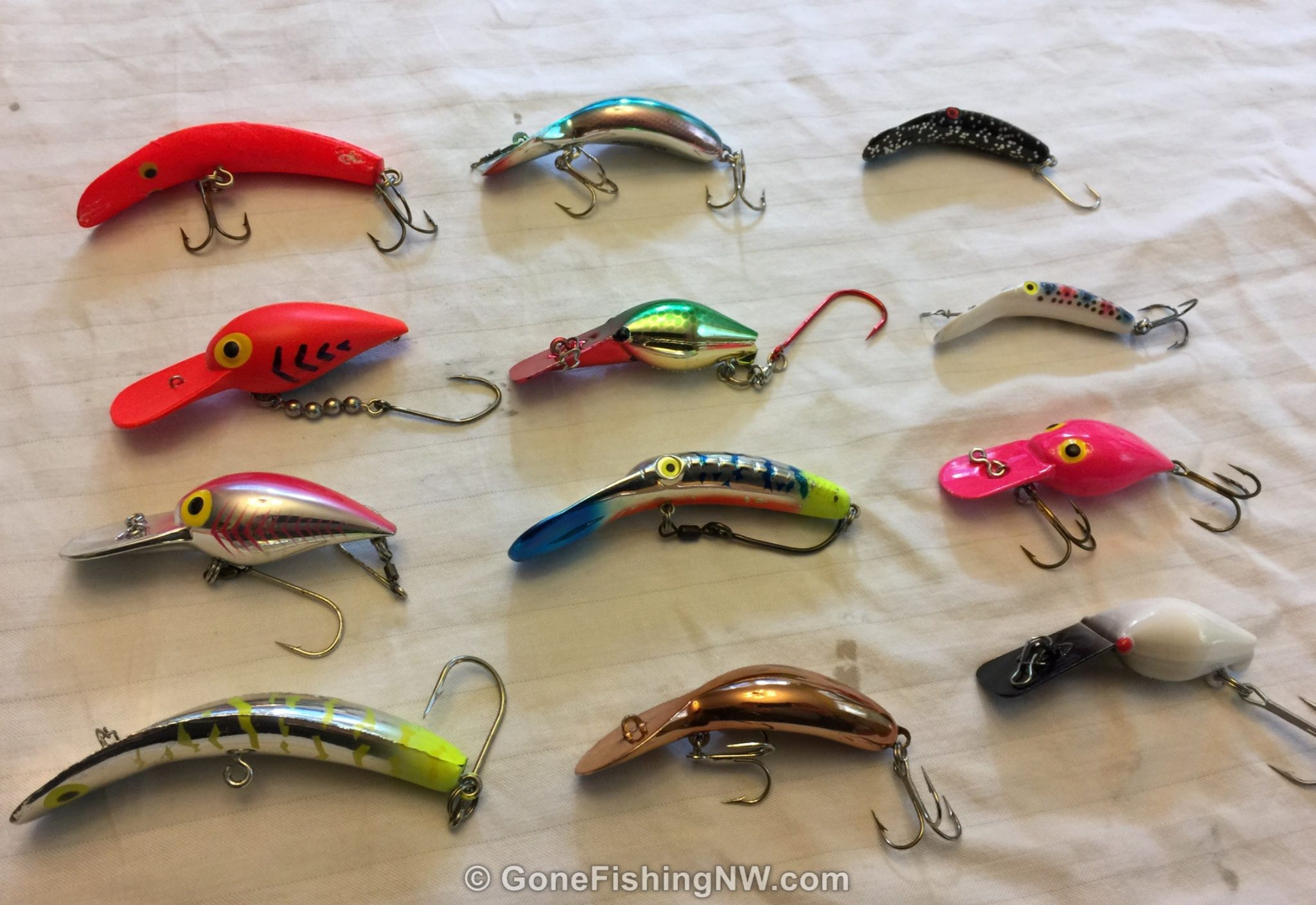
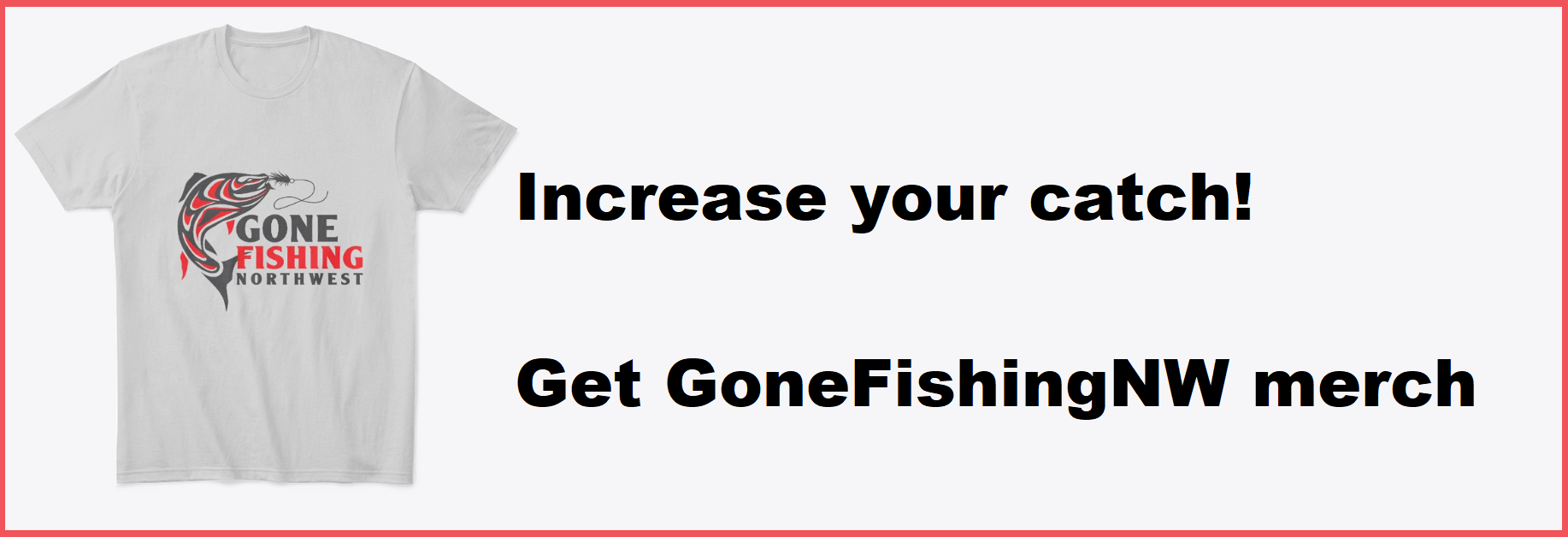
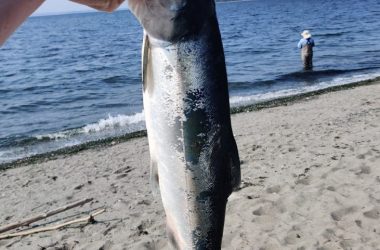
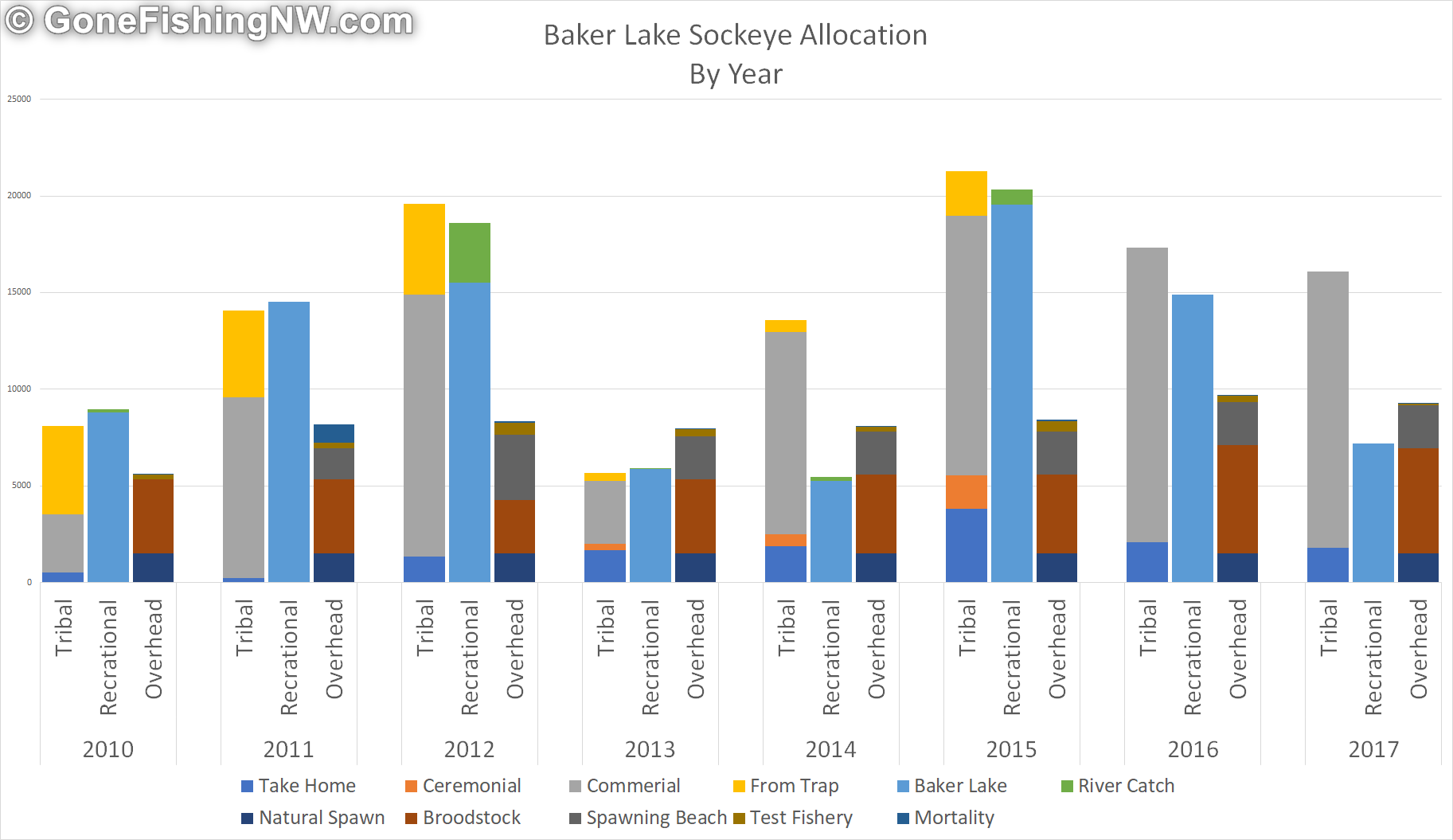
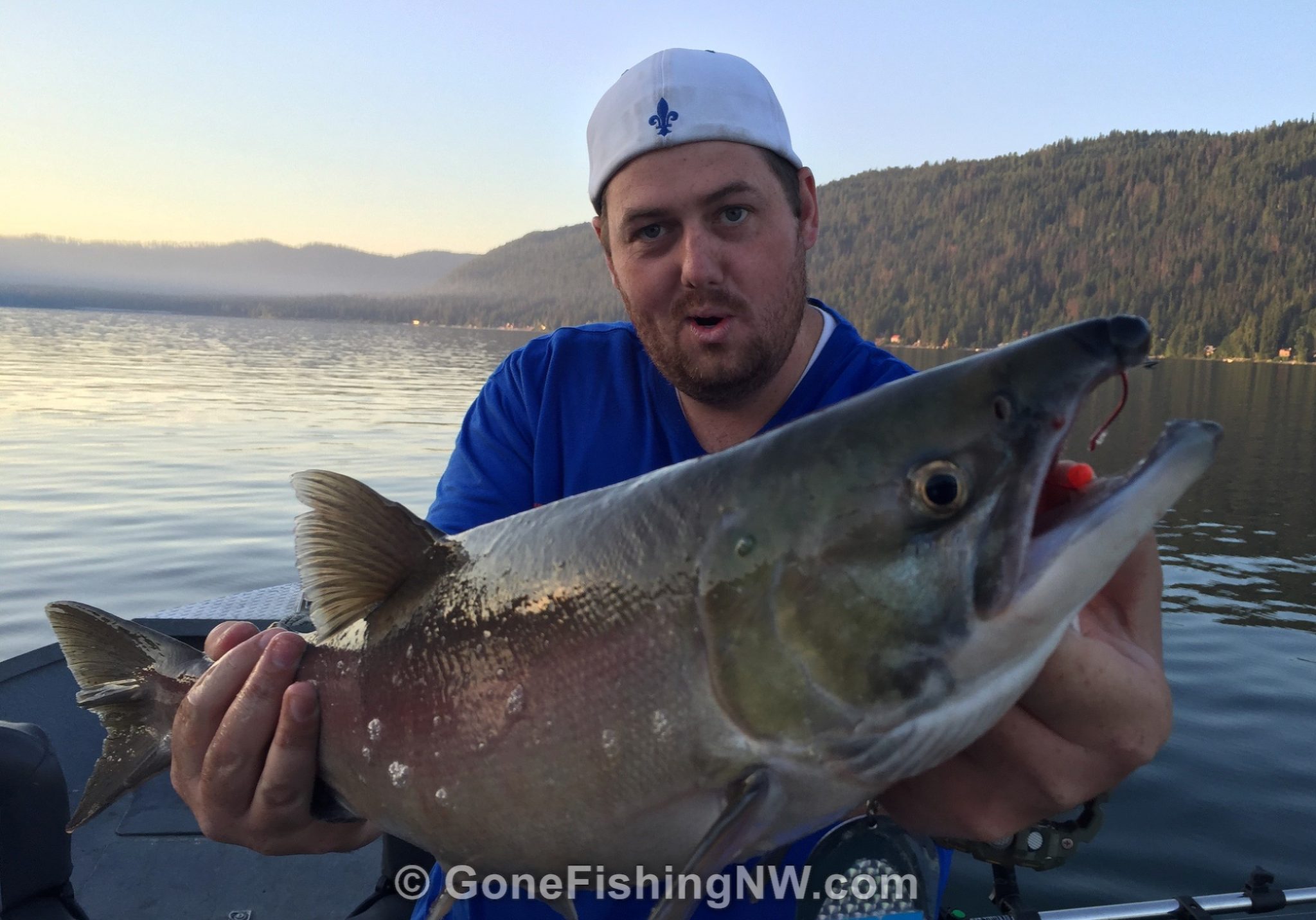
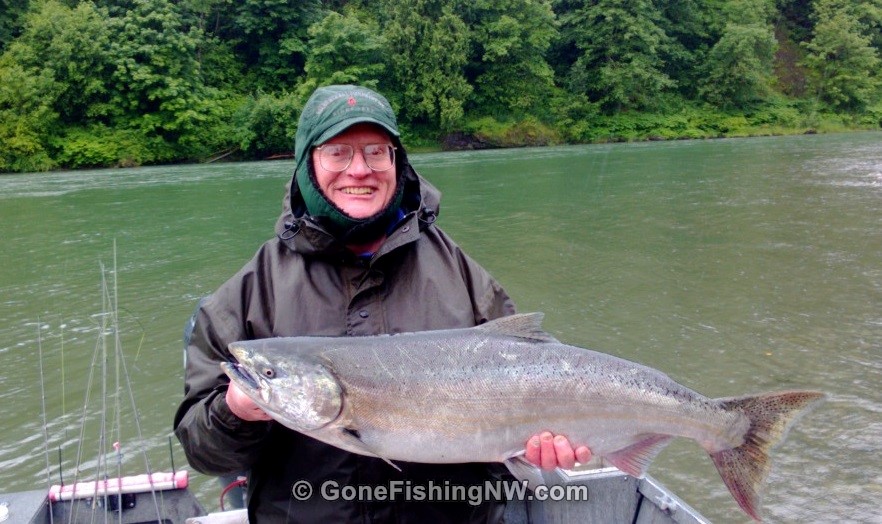
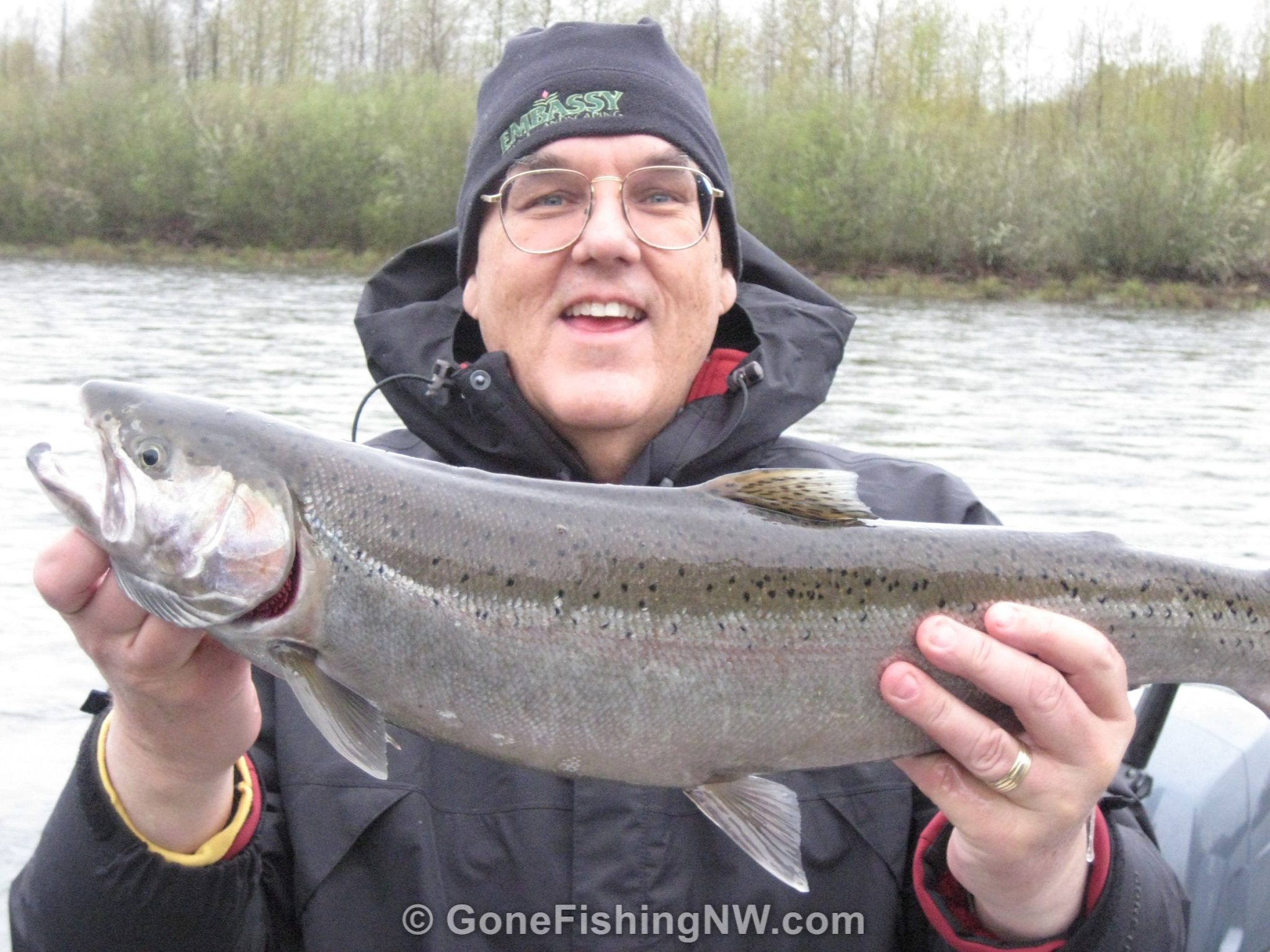
Comments are closed.